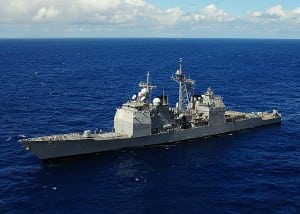
House appropriators have approved the Navy’s plan to sideline cruisers for modernization, but have placed limits how many can be removed from service and added other measures to ensure the guided-missile ships don’t wind up decommissioned. In the fiscal 2015 defense spending bill the House Appropriations Committee is teeing up for a full vote in the lower chamber, the Navy would only be permitted to sideline two cruisers per year starting in fiscal 2016 and no more than six at…













